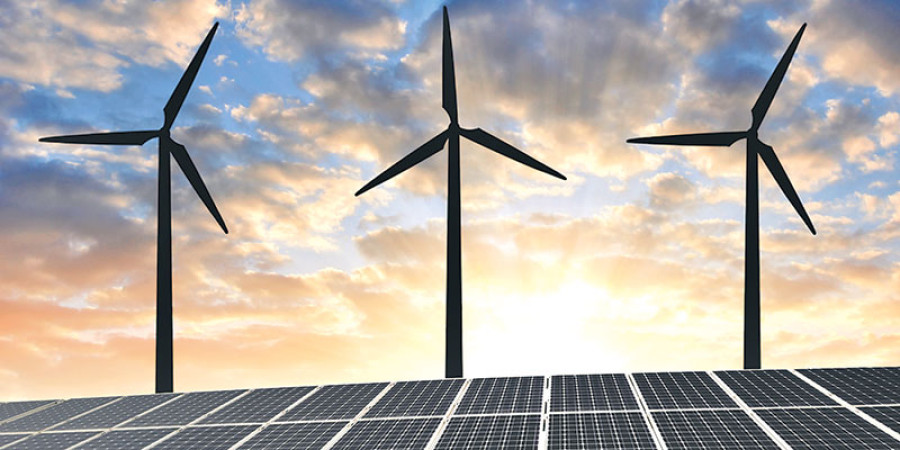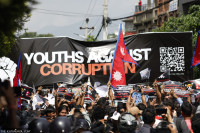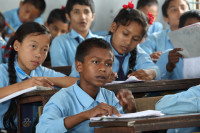Opinion
Towards a brighter future
A stable government and new players in energy generation could help Nepal meet its SDG target
Himalaya Bir Shrestha
Energy is not only a global goal at its own right but is also central to the 2030 Agenda for Sustainable Development. The Sustainable Development Goal (SDG7) targets include achieving, by 2030, universal access to affordable, reliable and modern energy services, increasing substantially the share of renewable energy in the global energy mix and doubling the global rate of improvement in energy efficiency.
A recent series of policy briefs launched in April 2018 at the United Nations showed that the world is not on track to achieving energy related Sustainable Development Goals. In the context of Nepal too, it’s a long way ahead before we achieve the goals.
Energy and development
As of 2015, the electrification rate in Nepal was only 75 percent. The population coverage by the national grid is even lower. The remaining 25 percent of the population i.e. more than 5 million people still lack access to basic electricity— depicting the supply and demand gap. In the rural areas, the electricity supply from the decentralized systems such as micro hydro, mini grids, stand alone or hybrid systems is limited. Mostly electricity is used for lighting, charging mobile phones and small equipment.
The picture is also dimmer when it comes to access to modern and cleaner cooking facilities. About 74 percent of the populations still use solid fuels for cooking, followed by LPG at 18 percent. Although the usage of LPG has increased rapidly during the last few years even in rural areas, household’s heavy reliance on traditional energy sources (solid fuels) remains unchanged.
Historically, economic development of a country is strongly correlated with its per capita energy usage, especially electricity. In 2015, the per capita annual electricity consumption in Nepal was only 140 kWh, the lowest in South Asia. But since Kulman Ghising as the director of Nepal Electricity Authority (NEA) has slashed the load shedding hours, this number is certainly projected to rise.
Electricity in Nepal is mainly generated through hydro with negligible share of solar and wind energy. The share of renewable energy in total final energy consumption as of 2015 was only about 12 percent.
Under the various constraints, ensuring access to affordable, reliable, and modern energy for all is a daunting task. However, given the formation of first stable government, the beginning of new era in NEA, private sector coming up strongly in power generation, grid connectivity expanding, and alternative modern energy sources being capitalized, the country has the strength to meet the targets.
The way forward
The baseline report by National Planning Commission (NPC) proposed specific targets for SDG 7 by 2030. It includes accessibility of 99 percent households’ to electricity, increasing per capita electricity to 1500 kWh and decreasing the commercial energy use per unit of GDP from 3.20 ToE/mRs to 3.14 ToE/mRs by 2030.
In the Nationally Determined Contribution (NDC) communicated at the United Nations framework Convention on Climate Change (UNFCCC), Nepal stated its plan to generate 4000 MW of hydroelectricity by 2020 and 12000 MW by 2030.The construction of Nepal’s largest solar plant of 25 MW in Nuwakot funded by the Government and NEA, which is scheduled to be completed within a year, started in April 2018. This shows that the government is heading towards a positive direction to make the country more energy independent. Nevertheless, tremendous efforts are necessary from the government and private sector in the upcoming decade to fulfill the ambitious pledges stated by Nepal in the NDC and the NPC report.
The study by the Energy Efficiency Centre in collaboration with Federation of Nepalese Chambers of Commerce and Industry (FNCCI) depicts a significant potential in both electric and thermal energy saving in the energy intensive industries of Nepal such as iron and steel, cement and others. Similarly, in the residential and commercial residential buildings, there is significant potential in energy and cost savings with the replacement of conventional lighting with LED bulbs.
The impact of India’s policy to ban all diesel and petrol vehicles by 2030, the worldwide trend of growth in electric vehicles and the increase in electricity supply in Nepal will also encourage the uptake of EVs in the Nepali transportation market in the upcoming years.
The SDGs consists of comprehensive and challenging goals that require magnificent resources plus capacity enhancement to achieve them by 2030. Achieving them would require fundamental policy shifts, unprecedented national efforts and larger international cooperation in action.
In the energy sector, it is important to have short term, medium term and long term plans and link the annual budgets and programs to it along with credible financing strategy inclusive of the government, private sector, cooperatives, NGOs and development partners. Although all SDGs are equally important, prioritising as well as localising SDG 7 at sub national level is important in the context of Nepal since it has strong synergy with the GDP growth of the country. Mobilizing financial resources and meeting the financial gap, up scaling policy interventions to reach people, capacity development, and bolstering governance and delivery framework would be imperative to achieve the national target of sustainable energy for all.
Shrestha is a post graduate student in Renewable Energy Management at TH Koeln- University of Applied Sciences, Germany




 8.12°C Kathmandu
8.12°C Kathmandu










